#Flemish garden
Text
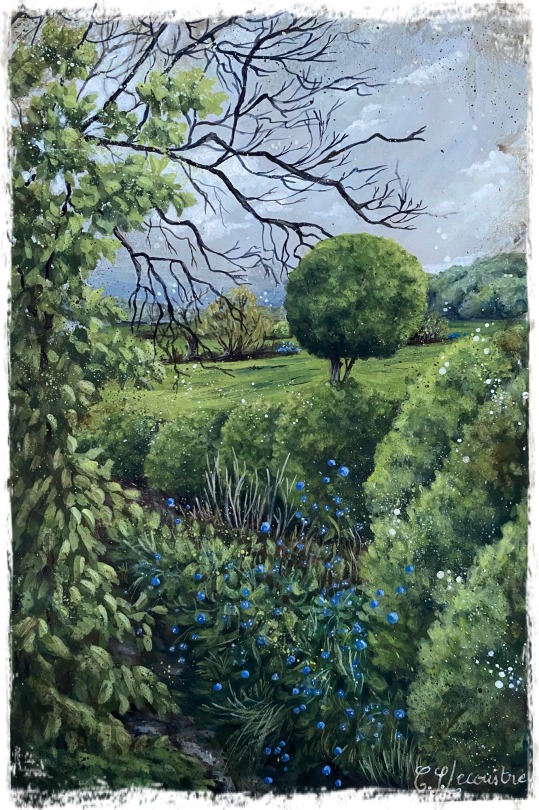
A path at Le Jardin du Mont des Récollets, in Northern France. Painting by Claudine Lecoustre ©️2023
Linktree
#garden#country#french#france#cottage garden#country garden#Flemish garden#countryside#garden landscape#hauts de france#jardin#topiary#art#french artist#french painter#Claudine Lecoustre#artists on tumblr#artists on instagram#female artist#woman painter#jardin remarquable#painting
188 notes
·
View notes
Photo

Camille aux hortensias, 2019. Francine Van Hove. Oil on canvas.
98 notes
·
View notes
Photo
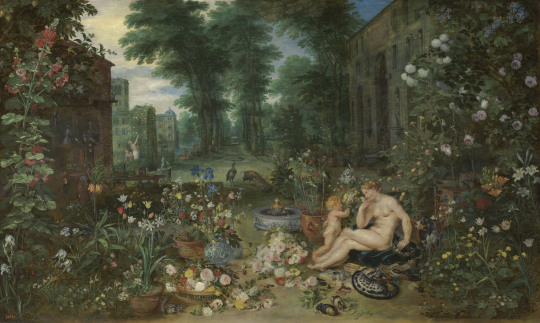
The Sense of Smell
Peter Paul Rubens (Flemish; 1577–1640) and Jan Brueghel the Elder (Flemish; 1568–1625)
1617–18
Oil on panel
Museo Nacional del Prado, Madrid, Spain
#Baroque art#Baroque paintings#Northern Baroque#Baroque painters#Flemish Baroque#Peter Paul Rubens#Rubens#Flemish painters#Flemish paintings#Flemish artists#Flemish art#1610s#17th-century art#17th century#17th-century Flemish painters#17th-century Flemish artists#smell#senses#flowers#gardens#Jan Brueghel the Elder#Brueghel the Elder#Cupid#Venus#fountains#allegories#allegory#hollyhocks#peacocks#five senses
450 notes
·
View notes
Text
We don't have an exact birthdate for Flemish artist Jan van Kessel the Elder, but he was baptised #OTD (5 Apr 1626 - d. 17 April 1679) so here are three versions of his caterpillars and snakes signature (+some bonus spiders for #BeKindToSpidersWeek):
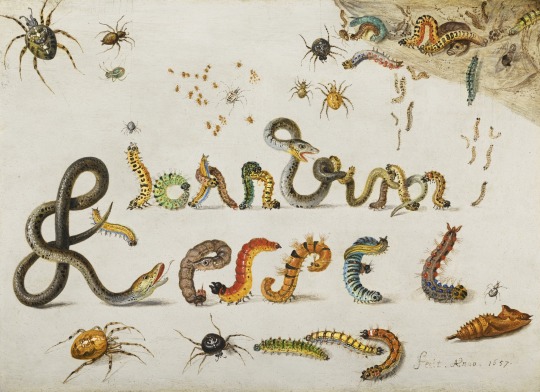
Jan van Kessel the Elder (Flemish, 1626–1679)
"Garden and house spiders with grass snakes and caterpillars contorted and entwined to spell the artist's name"
1657
oil painting on copper
H 15 cm (5.9 in) x W 20 cm (7.8 in)
Sothebys

Jan van Kessel the Elder (Flemish, 1626–1679)
The Four Continents: The Continent of Europe [detail of the signature panel]
c. 1660s
oil painting on copper
H 48.4 cm (19 in) x W 67.1 cm (26.4 in)
Alte Pinakothek

Jan van Kessel the Elder (Flemish, 1626–1679)
"Seventeen panels depicting snakes, lizards, flowers, caterpillars, beetles, butterflies and other insects" [detail including the signature panel]
1658
oil painting on copper,
39 x 56 cm (15 x 22 in) and 14 by 19 cm (5.5 x 7.5 in)
Oak Spring Garden Foundation, Upperville, call no. NW-UL-NW
You can read more about this creative signature, and see his son Ferdinand's version too, here:
#Jan van Kessel I#Jan van Kessel the Elder#Flemish art#European art#17th century art#oil painting#copper painting#caterpillars#snakes#spiders#insects#arachnids#arthropods#squamates#reptiles#signature#Sothebys#Alte Pinakothek#Oak Spring Garden Foundation#The Public Domain Review#animal holiday#Be Kind to Spiders Week#Please No Squish#animals in art
23 notes
·
View notes
Text
I do enjoy being able to talk about Flemish culture and Belgian-Dutch history on here because when I make posts on any other social media I immediately get a follow from usernames like germanicpride69 and vlaamseleeuw_ who wholly misunderstand what I’m about
5 notes
·
View notes
Text

"And the Lord God said to the serpent: Because thou hast done this thing, thou art cursed among all cattle, and beasts of the earth: upon thy breast shalt thou go, and earth shalt thou eat all the days of thy life.
I will put enmities between thee and the woman, and thy seed and her seed: she shall crush thy head, and thou shalt lie in wait for her heel."
Book of Genesis 3:14-15 Douay-Rheims Bible.
Artwork: Peter Paul Rubens, The Garden of Eden with the Fall of Man.
#catholicism#douay rheims bible#Book of Genesis#Bible quotes#Peter Paul Rubens#flemish#original sin#garden of Eden#old testament#blessed mother mary#Holy Mother of God
0 notes
Text
Hieronymus Bosch, un’inesauribile fonte di meraviglia

Article
(Image: Hieronymus Bosch, Trittico delle Tentazioni di sant’Antonio [particolare], 1500 circa. Lisbona, Museu Nacional de Arte Antiga © DGPC - Luisa Oliveira)
#Hieronymus Bosch#Painting#Rinascimento#Flemish art#Garden of#Earthly Delights#Temptation of St. Anthony
1 note
·
View note
Photo

Christ Appearing to Mary Magdalen as a Gardener, 1507 by Jacob Cornelisz van Oostsanen (Flemish, 1470–1533)
540 notes
·
View notes
Text

Virgin of the Rose Garden by Unidentified Flemish Painter, circa. 1475- 1480
68 notes
·
View notes
Text
It's Sweet Potato Awareness Month!


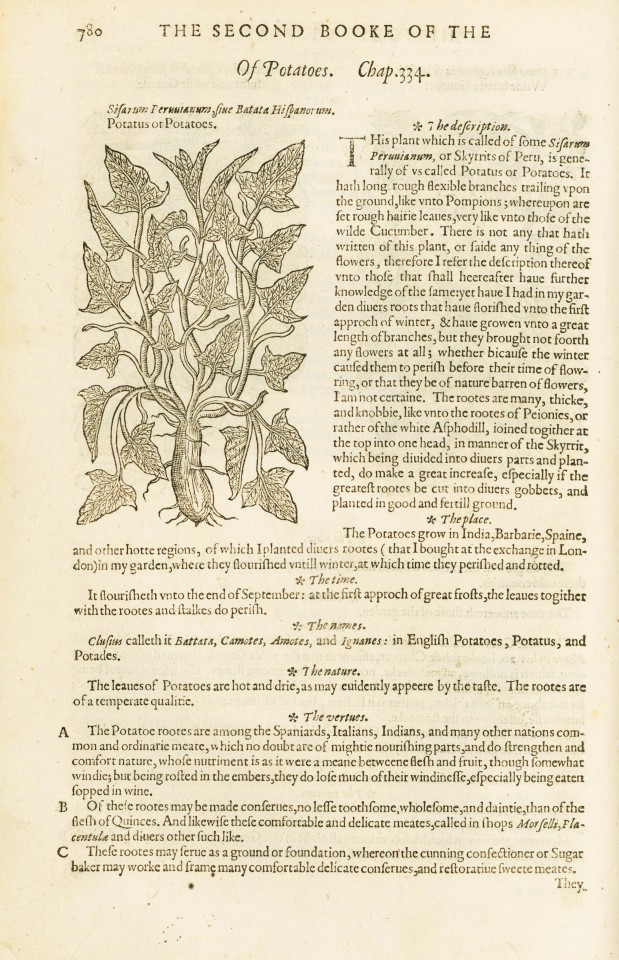
November is here and with it, Sweet Potato Awareness Month!
Native to tropical regions of the Americas and domesticated at least 5,000 years ago, the sweet potato is a delightful member of the morning glory family. Not to be confused with yams, sweet potatoes produce long vines with heart-shaped leaves and flowers above ground and delicious starchy tubers sprawling beneath the dirt. It is said that Columbus and his crew were the first Europeans to encounter and taste sweet potatoes, and they have been a staple among the American diet ever since with the average per capita consumption around 4.4 pounds per year.
In recognition of Sweet Potato Awareness Month, we’re looking at John Gerard’s Herball, or Generall Historie of Plantes. The book is his translation of a Latin version that was originally published in Flemish and includes some of Gerard’s original assertions and annotations from his own garden. Published in 1597 by the Queen's printer John Norton, it notably includes an example of the first English description of the potato! What Gerard describes as potatus or potatoes are in fact what we know today as sweet potatoes. Gerard’s lack of scientific knowledge led to misunderstandings about the plants he wrote about and criticism from his contemporaries. See our Science Saturday post for all the hot gossip about Gerard’s incompetencies and accusations of plagiarism.
Despite the drama surrounding Gerard’s botanical authorship and because of the inclusion of over 1,000 plants including illustrations, habits, and uses, Herball was an exhaustive and highly used resource of its time.
View other posts with our copy of Gerard's Herball.
-Jenna, Special Collections Graduate Intern
#sweet potato awareness month#john gerard#herball or generall historie of plantes#sweet potatoes#holiday post#gerard's herball#john norton#botany#holidays
104 notes
·
View notes
Text

The Garden of Eden, Flemish School, late 16th century
61 notes
·
View notes
Note
the rosier twins remind me of charles and camilla macaulay from the secret history by donna tartt, especially this passage:
"they were very much alike, with heavy dark-blonde hair and epicene faces as clear, as cheerful and grave, as a couple of Flemish angels. and perhaps most unusual... they liked to wear pale clothes, particularly white. in this swarm of cigarettes and dark sophistication they appeared here and there like figures from an allegory, or long-dead celebrants from some forgotten garden party. "
and this one:
"side by side, they were very much alike, in similarity less in lineament than of manner and bearing, a correspondence of gesture so that a blink seemed to reverberate, moments later, in a twitch of the other's eyelids. their eyes were the same colour of gray, intelligent and calm. she, i thought, was very beautiful, in an unsettling, almost medieval way which would not be apparent to the casual viewer."
you know?
oh absolutely! i've thought this for ages & the first quote especially has really informed how i talk about and even draw them... the other blonde pair of literary twins i associate them with are perses & pasiphae from circe ("entwined like minks")
30 notes
·
View notes
Photo
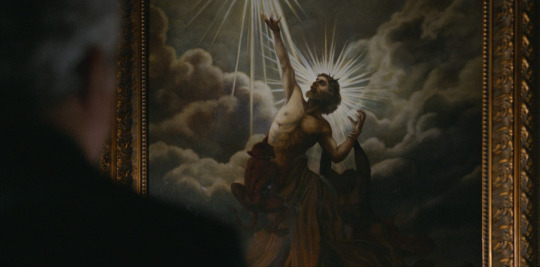


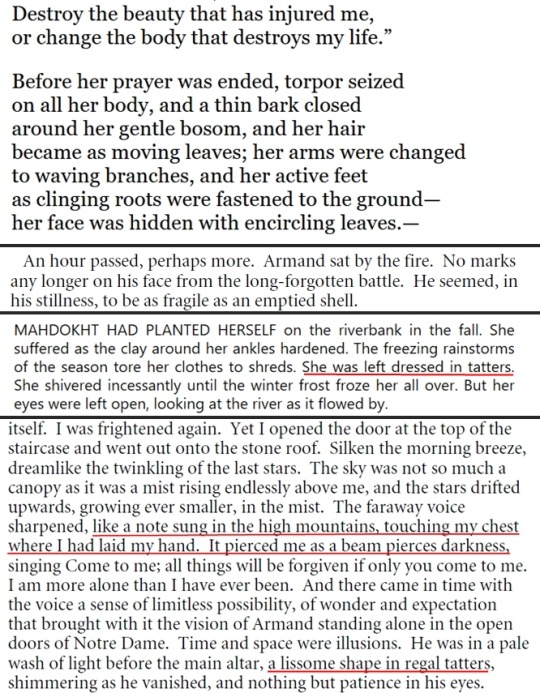

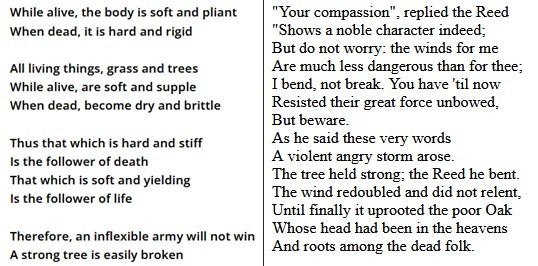
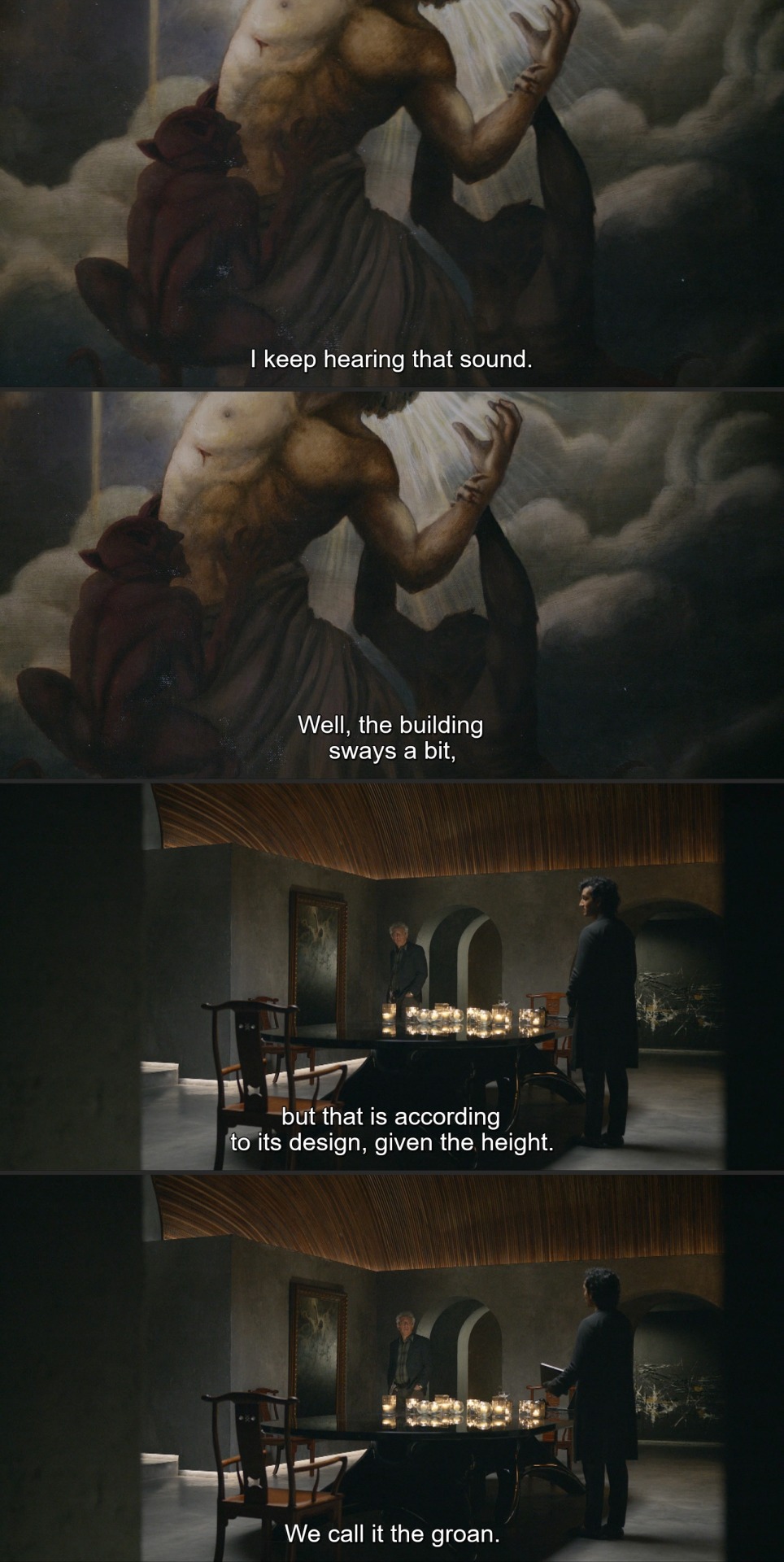

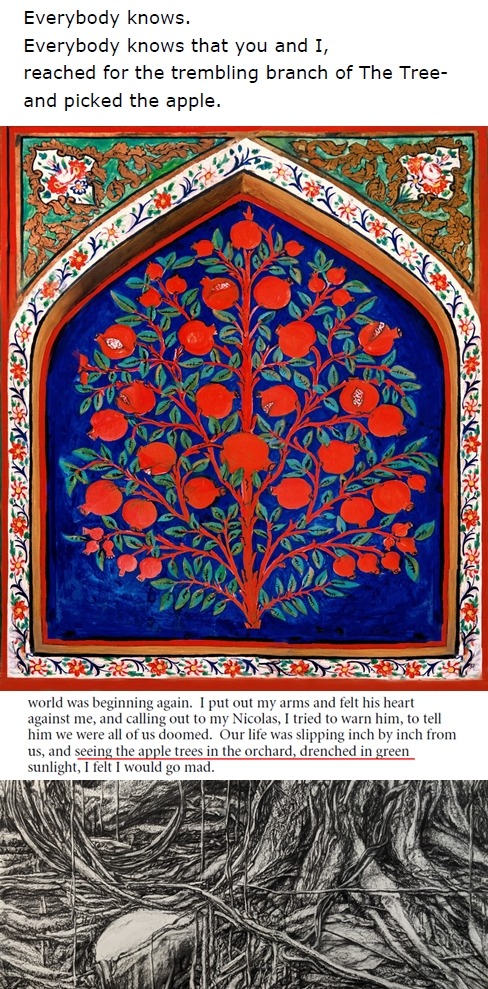

Interview with the Vampire After the Phantoms of Your Former Self | Anne Rice The Vampire Lestat | Daphné in medieval illuminated manuscript (1407 - 1460) | Ovid Metamorphoses | Sharnush Parsipur Women Without Men | The Tower (Rider-Waite) | La Foudre (Flemish Deck) | Lao Tzu Tao Te Ching | Aesop The Tree and the Reed | Anne Rice Interview with the Vampire | Forugh Farrokhzad Conquest of the Garden | Tree of Life from Palace of Shaki Khans, Azerbaijan | Ron Bechet Transformation | Forugh Farrokhzad Age Seven | Interview with the Vampire In Throws of Increasing Wonder | Interview with the Vampire The Thing Lay Still | Forugh Farrokhzad Window | Bhanu Kapil Humanimal | Emma Donoghue Kissing the Witch
#interview with the vampire#iwtv amc#the vampire chronicles#armand#louis de pointe du lac#daniel molloy#ovid#metamorphoses#the tower#forugh farrokhzad#sharnush parsipur#aesop#bhanu kapil#comparatives#knives#iwtv#ron bechet#lao tzu#didn't wanna include m*rius too much but i feel it's interesting that prometheus is the lightbringer and apollo is the god of the sun#and daphne transforms into evergreen laurel#tree of life#daphne
248 notes
·
View notes
Text

Master of the St. Lucy Legend, Flemish
Virgin of the Rose Garden, ca.1475-80
Detroit Institute of Arts Museum
The Virgin Mary attended by virgin saints (among them Ursula, Catherine of Alexandria, Barbara, and Cecilia), the coronation of the Virgin, and the mystic marriage of Saint Catherine to the Christ child.
In the background the artist has depicted the city of Bruges prior to 1485, when another level was added to the city's belfry.
#Master of the st lucy legend#art#medieval europe#medieval#christentum#christianity#christian#catholic#catholicism#roman catholic#catholic art#classical art#fine art#fine arts#rome#belgium#netherlands#netherlandish#flemish#Virgin Mary#blonde#saints#europe#europa#european art#european#oil painting#garden#flanders#1400s
46 notes
·
View notes
Photo



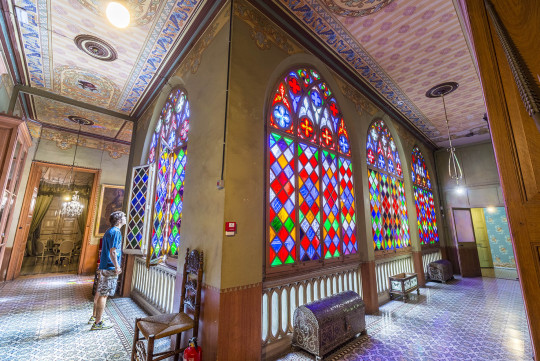
Museu Palau Mercader in Cornellà de Llobregat (Barcelona Metropolitan Area, Catalonia).
This building was once the palace of a wealthy aristocratic family. It was built between 1864 and 1869 by orders of the Count of Bell-lloc to be their summer house, surrounded by gardens.
The building has three floors. The first floor was the entrance, with the horse carriage garages and stables. The second floor was where the noble family lived, and the third floor was for the service.
The noble floor is richly decorated with an eclectic style. Baroque and Arab-inspired styles are the most common ones, but each room is uniquely decorated. There are rooms that are baroque, rococo, renaissance, neomudéjar, neoclassical or Isabeline style (Isabeline is the style of decorative arts that flourished during the reign of Queen Isabel II of Spain, 1833-1868).
The house is decorated with historical objects that the counts brought from their other possessions, such as paintings, Flemish tapestry from the 16th and 17th centuries, furniture from the 16th to 19th centuries, and architectural elements from the previous century.
Since 1995, the Mercader Palace is a public museum.
Photos by Turisme Baix Llobregat.
#cornellà de llobregat#catalunya#fotografia#history#eclecticism#museu palau mercader#art#architecture#interiors#interior#19th century#europe#luxury#luxurious#mansion#museum#travel photography#travel#palace#historic
111 notes
·
View notes
Text
20th March, 1861, London
Our protagonist, Étienne, is a Radical lately exiled from France for his revolutionary views. Today Étienne is seething about the bizarre theories of his fellow Londoner revolutionary emigre, Karl Marx. Oh sure, human society does progress linearly through stages, that's obvious, everyone knows that. But it's not because of accumulation or material conditions or whatever. Of course a guy who reads and writes about political economy and capitalism all day thinks all of politics is just political economy and capitalism. The French Revolution could not have happened until the late 18th century? Nonsense. The French Revolution couldn't have happened until the Enlightenment, sure, but the Enlightenment could have occurred sooner. All of the timing is just a historical accident, a matter of waiting for the right crisis in a country of the right (French) temperament and a Great Man or two possessed of the right concepts. You see, Étienne is very much an Idealist.
Étienne is a smart and well-educated man, and so a sympathetic acquaintance has managed to secure him a respectable position as an assistant curator at the new Museum of Manufactures in Kensington, and he quite enjoys his daily walk to work through the Kensington Gardens from his new home in one of the nicer streets of Paddington. Despite his intelligence, however, he is not a cautious man, which is how he ended up in London in the first place. Today it would have paid to be cautious. George F Train, a man of rather similar temperament to Étienne, has recently set up a tram line running along the north edge of Kensington Gardens. Étienne is crossing there at this very moment, too absorbed in his pondering of historical forces to notice the people yelling at him to stop or the carriage speeding towards him. He is pronounced dead at the scene.
???, Paris
Our protagonist, Étienne, has just been born to Isabelle Barbou, wife of the clothier Simon Marcel. How this has happened, or how it is possible, is not known to the author of these words. All that is known is that Étienne the son of the clothier Simon Marcel is very much the same person, with the same memories, as Étienne the aforementioned assistant curator. His first act, in his second (and yet preceding?) life, is quite characteristic for the newborn body he now occupies. He cries. For several years, as any baby does, he will compose himself. Étienne, however, is not getting used to the existence of the world, but rather to early 14th century France, a task by no means easy for a man used to the conveniences of 19th century urban life and goods.
12th June, 1315, Paris
Étienne had been fairly quick to orient himself. Easily he discovered his name and identity, though his knowledge of its meaning was rather hazy as his recollections of medieval history were not the best even when he was first alive. He was supposed to be some sort of traitor? That fit well enough. It took him longer to get a precise handle on the date. Even if he had been able to discern which Roi Philippe people were talking about and which Flemish Revolt they were discussing, he did not remember the precise years. Eventually he snuck enough peeks at contracts to be confident that the clustering of dates around 1311 roughly reflected the then-current year.
Étienne's first thought had been to prevent the Hundred Years War. Sure, tensions between the Kings of England and France were already high and unwinding those antagonisms would not be possible, but if the looming succession crisis of 1328 could be stopped the intensity and length of the warfare could be reduced and the repeated threats to French independence could be headed off entirely, and history could be advanced by up to the century otherwise lost to pointless war. Sure, the French people would be denied the glorious symbol of Jeanne d'Ar- hm. Was Jeanne someone like him? Were there others in his own new time? Well, that was a worry for another time.
It was the Tour de Nesle affair and the death of Philippe IV that prompted Étienne to seriously review the idea of preventing the succession crisis, and which eventually led him to dismiss it entirely. How was a young cloth merchant in Paris, whose father was not even all that rich or prominent, affect the family relations of the Capet family? Even if he were the fournisseur des draps for one of the princely houses, how would a wise choice of fabrics help? No, there really was no prospect of preventing the crisis.
Already since first hearing of the Flemish revolts, Étienne had been idly fantasizing about an alternative approach. Instead of preventing the crisis, he could take personal initiative and advance history by a great deal more taking advantage of the crisis. The Valois would certainly need to call the États Généraux to finance the war, and if he could get there Étienne could start rerunning the events of 1789. Certainly he would not be able to prevent the emergence of the Empire, likely he would not make it to a Republic, but perhaps he could give France (and by extension the world) a bit more of a head start.
Étienne's questions, rather odd even for a precocious child, got him the answers he needed. The elected position most likely to be invited to the États was the Prévôt des Marchands of Paris. Some modifications to the events of 1789 would be necessary, there was no Bastille to storm (storm the Louvre instead? or build a Bastille and storm that?) but in principle he had everything he needed. A crisis, the Parlement de Paris, a meeting of the États Généraux. Doing anything like this just one century earlier would have been much more difficult.
#original fiction#ok so i SAY i dont like isekai or historical fiction and I really dont but I suspect after this nobody will believe me
16 notes
·
View notes